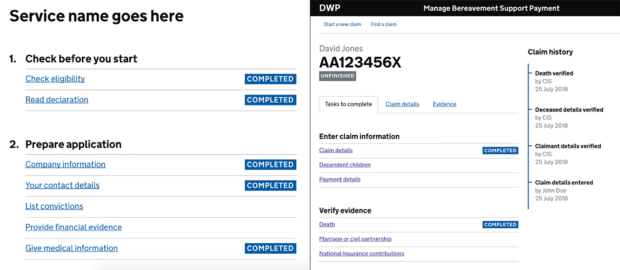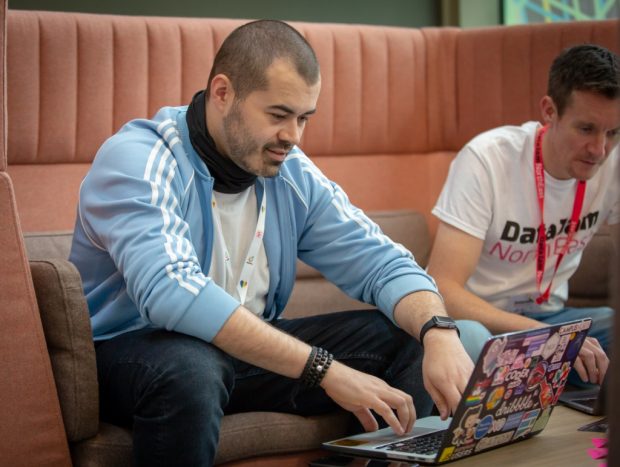In government, we have access to lots of research and design patterns that have been tried and tested. If someone else has already solved a problem, we can reuse their design. This saves time and money and creates a consistent experience for the user.

The challenge is that most of this research and design work has been for services that the public use. We do not have a similar bank of research into what civil servants actually need from a service to do be able to do their job.
At DWP Digital, I'm a senior interaction designer in the Bereavement team. We're developing a service called Manage Bereavement Support Payment. Civil servants use this to create and change claims that people have made for Bereavement Support Payment.
Designing a service that civil servants use has been interesting. As a designer, it's been both a challenge and an opportunity.
Reusing design patterns
When I sat down and tried to design a service which colleagues use, it was easy to get carried away. I had a clean slate. I could create whatever I wanted.
When I started to sketch out ideas, designing everything from scratch suddenly seemed like a bad idea. After all, civil servants are people trying to complete a task, just like anyone else. So, why couldn't we use our existing knowledge here?
On Manage Bereavement Support Payment, that’s exactly what we've done. We've designed a service for colleagues using design patterns from services the public use. For example:
I've also researched and borrowed parts of several existing services where possible.

More time to think about the bigger problems
Reusing existing designs gave us more time to focus on the most challenging areas, like the nuances in policy or process that might make the service behave in a way the user is not expecting.
It also gave our user researcher and me a chance to get several sprints ahead of our developers. This means we have enough time to iterate new features while our developers are building the things we have already proven to work. This has saved us from rewriting code and tests when we find something doesn't work in our research.

Reuse also gives you a lot of research insights for free. These existing patterns are used in many services. They have been through hundreds of rounds of research; we know they’re accessible. If you create your own designs from scratch, you have to do all that work yourself. This reduces the amount of time you can spend tackling the bigger problems.
Choosing usability over elegance
As designers we often like to put our own stamp on things. We want to be artistic and creative. But design is not art. And making something easy to use is much better than making it unique.
Design patterns that are used on services designed for the public may not always work for our colleagues. Sometimes it takes several iterations to get things right. But they are always a good place to start.
This has worked well for Manage Bereavement Support Payment. We research our designs every sprint with the colleagues who will be using it, and feedback is overwhelmingly positive. In fact, some colleagues are so used to complex systems, they get concerned things are 'too easy'. But we can live with that.
If you would like any more information on our designs or our ways of working, we're happy to share.

4 comments
Comment by Steve Fleming posted on
Great to see government organisations looking for opportunities to reuse existing assets more frequently. Architects, designers, developers, testers should all be asking where has this been done before (or something similar)? Pega has the (admittedly American-sounding) Situational Layer Cake (https://www1.pega.com/insights/resources/build-change-situational-layer-cake) which enables extensive reuse of previously configured components, so instead of rebuilding things you already have, you can take existing assets and adapt them to reflect what's needed for a new requirement.
Comment by Jo Mo posted on
Great post! Really eager to hear about the work that is going on in the Bereavement team.
Comment by Craig Abbott posted on
Thanks, Jo.
Always happy to chat about it if you want to know more. You can find me on twitter or LinkedIn under @abbott567.
Comment by Nick Joyce posted on
Great post, good to see that these design principles are being re-used to offer services to enable people to do their jobs.